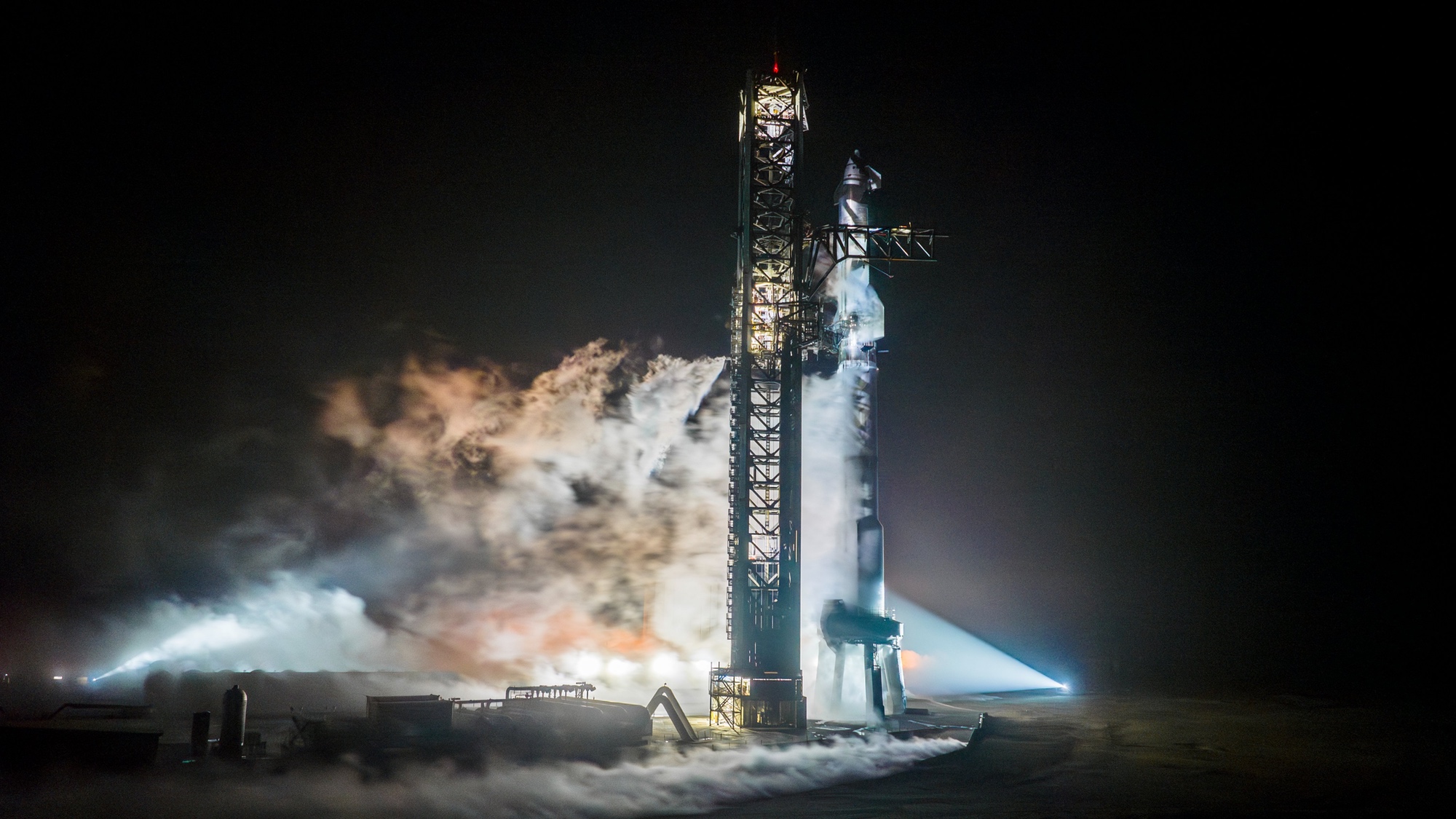
WASHINGTON — SpaceX is planning a more ambitious set of in-flight tests of its Starship vehicle on its next launch to demonstrate capabilities needed for launching satellites and going to the moon.
SpaceX said March 6 it was projecting a launch of Starship/Super Heavy vehicle on its third integrated test flight as soon as March 14. The company noted that date is pending regulatory approvals, although officials with the Federal Aviation Administration, which closed Feb. 26 the investigation into the second flight, said last month they expected to have an updated license ready in time to support a mid-March launch.
The third flight will follow a different profile than the first two, which called for Starship to complete nearly one orbit before reentering and splashing down near Hawaii about 90 minutes after liftoff from the company’s Starbase complex in South Texas. Neither launch completed that profile, with the first Starship/Super Heavy vehicle destroyed a few minutes after liftoff in April 2023 and the second, in November 2023, suffering separate failures of the Super Heavy booster and Starship upper stage.
The profile for the third flight projects a splashdown in the Indian Ocean nearly 65 minutes after liftoff. “This new flight path enables us to attempt new techniques like in-space engine burns while maximizing public safety,” the company stated.
A firing of a Raptor engine while in space, which SpaceX has not attempted, is one of the new elements added to the upcoming launch. Another in-flight test added to the mission is opening and closing a payload bay door that would be used for future launches that deploy Starlink satellites.
SpaceX also confirmed it will perform a propellant transfer test on the flight, moving propellant from one tank to another within Starship. That test, supported by a NASA Tipping Point technology demonstration award, is a step towards future tests where one Starship vehicle will transfer methane and liquid oxygen propellants to another Starship in orbit.
That capability is essential to Starship’s use as a lunar lander for NASA’s Human Landing System (HLS) program. One Starship would serve as a propellant depot in low Earth orbit, filled by subsequent flights of “tanker” Starships. The Starship lunar lander would then launch, be refueled by the depot, and go to the moon. A SpaceX official said in January that “ten-ish” refueling flights would be needed to support a single HLS mission.
The pace of Starship development to support the first crewed Artemis landing, no earlier than September 2026, has been a source of tension. “Of course it absolutely concerns me because we need them to launch multiple times,” Jim Free, NASA associate administrator, said in an interview broadcast by the CBS News program “60 Minutes” March 3, when asked about the first two Starship launches.
However, he said he still believed the landing could take place on the current schedule, even after told of an interview SpaceX Chief Executive Elon Musk gave in January where Musk said a human landing on the moon would take place “in less than five years,” which would suggest a potential delay of up to two years.
“My view of that,” Free said, “is that we have a contract with SpaceX that says they’re going to launch our crew in the end of 2026.”
NASA’s Aerospace Safety Advisory Panel, which highlighted the complexities of the Artemis 3 mission in its annual report published in January, said at its Feb. 28 public meeting that NASA and SpaceX were working well together on the HLS version of Starship.
“What we heard from the team this time was that there’s a lot of good learning going on with the flight tests of Starship,” said William Bray, a member of the panel. “There’s goodness there between SpaceX and the NASA teams as we evolve forward.”
https://news.google.com/rss/articles/CBMiQGh0dHBzOi8vc3BhY2VuZXdzLmNvbS9zcGFjZXgtYWRkcy10ZXN0cy10by1uZXh0LXN0YXJzaGlwLWZsaWdodC_SAQA?oc=5
2024-03-07 01:11:17Z
CBMiQGh0dHBzOi8vc3BhY2VuZXdzLmNvbS9zcGFjZXgtYWRkcy10ZXN0cy10by1uZXh0LXN0YXJzaGlwLWZsaWdodC_SAQA
Tidak ada komentar:
Posting Komentar